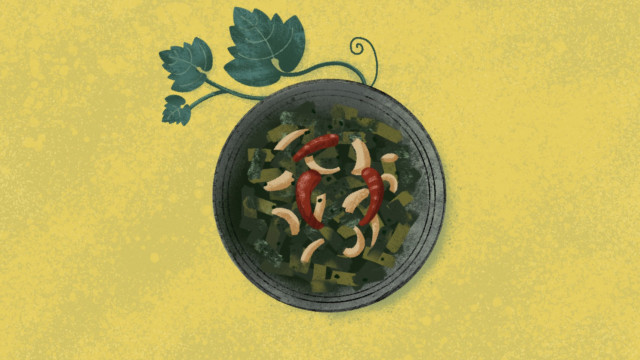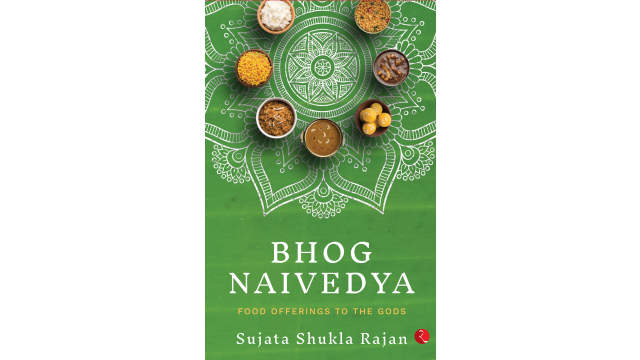Blessed Bhog at Puri

I first learned the word “juggernaut” at school, where my teacher explained that, etymologically, it is derived from Jagannath, an avatar of the Hindu deity Vishnu, whose famous 12th-century temple is in the coastal city of Puri in eastern India.
Each year a nearly 44-foot-tall chariot carrying the folksy wooden idols of Jagannath and his siblings Balabhadra and Subhadra is dragged by lakhs of devotees from the temple precincts. The chariot procession, or rath yatra, is one of the biggest religious congregations in India.
Apocryphal stories of the ginormous chariot hurtling down the streets and mowing down devotees who flung themselves beneath the wheels of Lord Jagannath were retold in Europe by Friar Odoric, a 14th-century Franciscan missionary who had witnessed the rath yatra. By the 19th century, “juggernaut” had come to mean an unstoppable force in English.
Temple Cuisine & Nutrition
Appropriately, the Jagannath temple has the biggest Hindu temple kitchen in India. The mammoth amounts of sanctified vegetarian food cooked there daily can feed the 50,000 people who visit the temple on regular days. On festive days, the number of visitors swells easily to 120,000 according to Krishan Kumar, the chief administrative officer of the Shree Jagannatha Temple Administration.
Through the day, bhog — platters of rice and vegetarian accompaniments — are offered as blessed food or naivedhya before the shrine and later distributed to the devotees. A variety of bhog are offered six times each day before Jagannath’s sanctum sanctorum.
While bhog, signifying simply cooked rice and lentils, is a popular offering in temples and on religious occasions in parts of eastern India like West Bengal and Assam, the mahaprasad at Puri remains distinctive. At the Jagannath temple, bhog is the prime form of worship.
According to Odia food specialist Sweta Biswal, temple legend has it that the first bhog was cooked by Maha Lakshmi, the goddess of prosperity, to serve her consort, Vishnu. Now, a kitchen staff of 700, made up of members of the Suar Mahasuar Nijog, or temple cooks from Puri, are the only ones allowed entry into the sanctified temple kitchen to cook the food. An additional staff of about 700 are engaged in the preparations. Four hundred people chop vegetables, while another 200 carry purified water and prepare spices for the dishes.
Nearly 50 quintals (5000 kilograms) of rice are cooked daily for various rice dishes such as ghee anna, sadha anna, mahana bhog, hengu kechudi, and nabagraha kechudi, which are part of the mahaprasad, or great offering, at lunch time. Dals, sweets, savory dishes, fritters, and greens are also part of the “chappan bhog” or 56 dishes offered in this mahaprasad. The country vegetables, lentils, and pulses used in the cooking are all sourced locally and seasonally.
Equality of sanctified food
In most temples, sanctified food is cooked in traditional metal vessels and served to devotees in small cups made of dried lotus, plantain or sal leaves. At the Jagannath kitchen, red earthen pots called kudua are used to cook the mahaprasad in stoves lit by firewood of the casuarina tree. The earthen pots for the temple kitchen are specially made by artisans of the Kumbhar Pada Kumbhakar Silpa Samabaya Samit, a potters’ association in Puri.
Biswal observes that it is “mindful and unique that the blessed mahaprasad at the Jagannath temple is free from caste discrimination.” Devotees of all communities eat from the same earthen pots, which are later sold in the town’s Anand Bazaar or the temple canteen.
Nourishing Bhog
The bhog remains a hearty dish with a balance of carbohydrates from the rice, plant protein from the dal, fiber from vegetables, and healthy fat from ghee. Amino acids in the mung dal, fiber in the heritage rice, and vitamins and minerals from vegetables make it good for gut health.
While the temple menu ticks off all the wellness factors with a sattvic spread that is seasonal, vegetarian, and observes moderation in spice, oil, and sharp tastes, the cooking and offering of the bhog is also a mindful exercise. Biswal points out that the daily cooked rice is not allowed to go waste.
Instead, it is dried and sold in colourful little packets called nirmalya or kaibalya for devotees to buy and add to their cooking as blessed food. The pej or water drained from the rice while cooking is offered to the cattle and the homeless near the temple. The rice water of the mahaprasad is also turned into tanka torani, a fermented summer drink of rice water, curd, and aromatics for thirsty travellers and pilgrims who throng the temple.
The blessed bhog transcends culinary delights to offer nourishment and sustenance. At the sacred Puri temple, the sattvik mahaprasad, remains both an offering of sanctity and love.
Key Takeaways
- Bhog is gut-friendly and soothing.
- The temple cuisine follows mindful practice.
- The temple food is nourishing fare.



